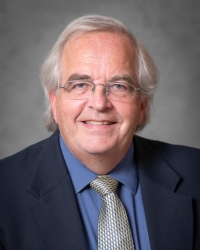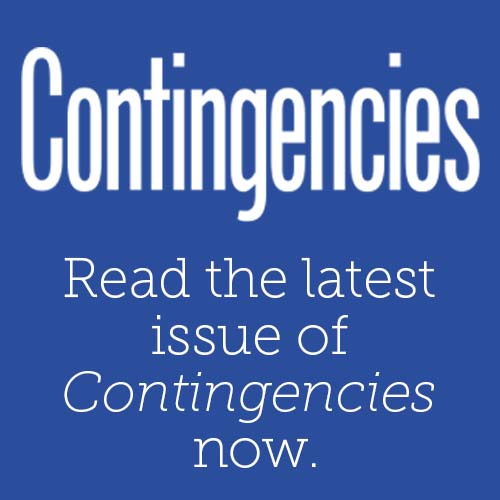Several annotations to Precept 10 of the Code of Professional Conduct—which addresses courtesy and professional respect—provide more detail about some of the difficult situations an actuary may face and how to handle them.
To help actuaries better understand continuing education requirements, the Academy has updated the infographic “What CE Requirements Apply to Me?” to align with the recently revised U.S. Qualification Standards that took effect Jan. 1.
Keeping actuarial standards of practice (ASOPs) up to date with current practice, law and regulation, and other developments in the business and economic environments in which actuaries operate is a vital part of the work of the Actuarial Standards Board (ASB). The ASB—and its committees and task forces—has been extremely busy in the last year or so revising ASOPs. Five revised ASOPs will take effect this year—here’s a quick look at some of the changes.
The Committee on Professional Responsibility published Explaining Professionalism to Principals last fall. This month’s “Professionalism Counts” offers a Q&A with the authors of the paper, who offer some background and how it can help actuaries.
November’s professionalism webinar, “Self-Regulation and the Actuarial Profession,” engaged the audience in an enlightening discussion about how every actuary has a role to play in self-regulation by adhering to the Code of Professional Conduct, the U.S. Qualification Standards, and actuarial standards of practice. This “Professionalism Counts” offers a follow-up Q&A with the presenters.
The Academy, which sets standards for qualification, practice, and conduct for actuaries practicing in the United States, has revised the standards defining the qualifications for actuaries who issue statements of actuarial opinion (SAOs) in the United States. The revised Qualification Standards for Actuaries Issuing Statements of Actuarial Opinion in the United States (USQS) will replace the existing qualification standards as of Jan. 1, 2022. Changes to the USQS include a new requirement for one CE hour of bias education annually, important clarifications regarding qualifying to issue SAOs in particular subject areas, and changes related to non-U.S. actuaries and to Enrolled Actuaries issuing SAOs in the United States. Read the news release.
In part two of two, Actuarial Standards Board (ASB) member Cande Olsen takes a closer look at the evolution of actuarial standards of practice (ASOPs)—disclosures, notable changes, and the ASB’s handling of comments.
The Committee on Professional Responsibility has released a new discussion paper. Explaining Professionalism to Principals is intended to help actuaries think proactively about professionalism and how to explain its importance to the work they do.
In part one of two, Actuarial Standards Board member Cande Olsen looks at what’s behind some recent modifications of actuarial standards of practice (ASOPs), and offers some tips for keeping up with the ASOPs.
The Applicability Guidelines, updated after the Actuarial Standards Board issues a new or revised actuarial standard of practice (ASOP), are a useful tool to help determine which ASOPs may apply to an assignment. These guidelines have been updated for several recently revised ASOPs—Nos. 11, 27, 32, and 35.
As you progress through your career, you may be asked to provide actuarial services for new products, using new technologies or methods, and even in new areas of practice. How do you know if you are qualified to perform such work? The actuarial professionalism structure can help you determine whether you are qualified.
The drafters of the Qualification Standards for Actuaries Issuing Statements of Actuarial Opinion in the United States (USQS), which took effect in 2008, believed continuing education (CE) to be so important that they raised the number of hours required from 12 to 30 per year. These and other significant changes left actuaries with a lot of questions about the new requirements and how to meet them.
The Actuarial Standards Board (ASB) has been very busy in recent months in the last year: About 20 of the 52 actuarial standards of practice (ASOPs) that are currently in effect are being revised. In addition, two new standards are being developed, and one actuarial compliance guideline will likely be converted into an ASOP. Most reading this are not a member of the ASB or one of its committees or task forces, but you should know you do have a role to play in this process.
A new paper from the Committee on Professional Responsibility, Professionalism for the Solo Actuary, was published this month. Actuarial Update asked some of the contributing authors—John Purple, Kathleen Wong, and Shawn Parks—to find out more about their views on the challenges facing actuaries working on their own.
The Committee on Professional Responsibility released a new professionalism discussion paper, Professionalism for the Solo Actuary. The ideas and suggestions offered in the paper are intended to assist solo practicing actuaries or actuaries practicing in small firms with respect to situations that they may encounter in providing actuarial services.
Professional judgment is core to an actuary’s work; it comes into play when determining whether an actuary is qualified to take on an assignment, which actuarial standards of practice (ASOPs) to use when performing an assignment, and how to interpret those ASOPs. But the ability to exercise sound professional judgment isn’t magically bestowed when an actuary earns their credential—it is developed over years of training and experience.
Professionalism lies at the heart of the Academy’s mission. Accordingly, the Academy maintains a wealth of professionalism resources to help members keep their professionalism knowledge up to date.
Conflict of interest. We've all heard the term, but what exactly does it mean? And why is it important for actuaries to avoid a conflict of interest? It all goes back to the Code of Professional Conduct.
This “Professionalism Counts” column covers reliance as a matter of responsibility.
Precept 8, Annotation 8-1 of the Code of Professional Conduct (the Code) observes that an actuarial communication prepared by you as an actuary “may be used by another party in a way that may influence the actions of a third party.” This is your power as an actuary.






